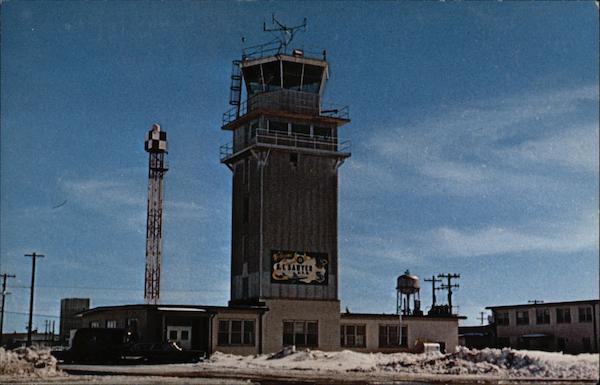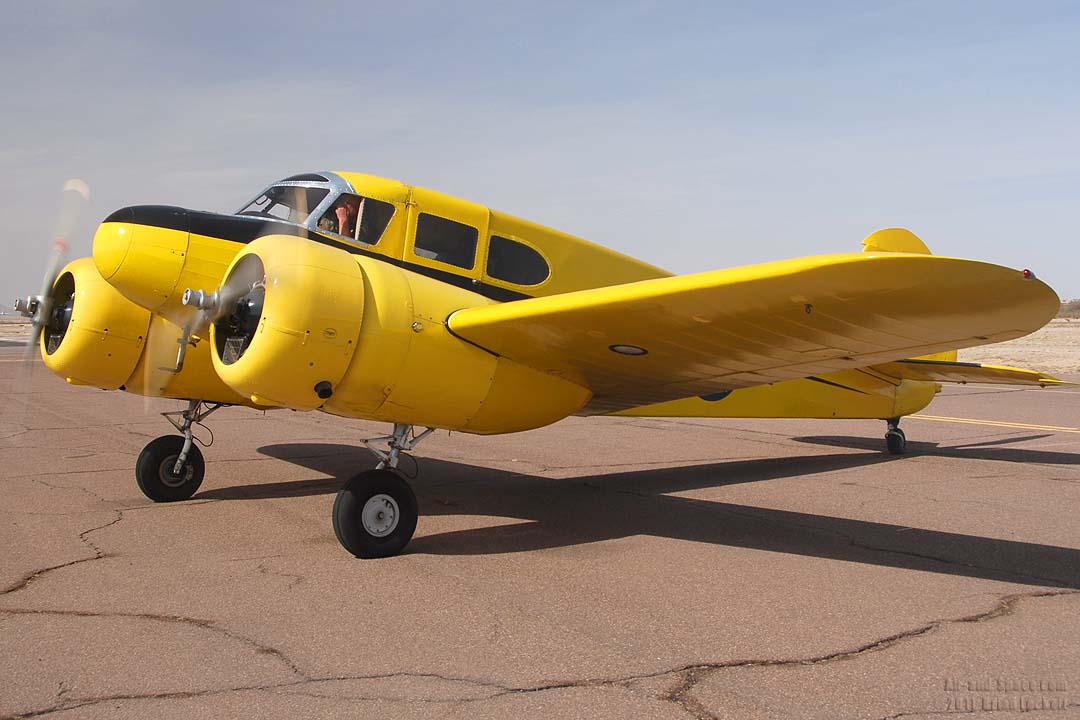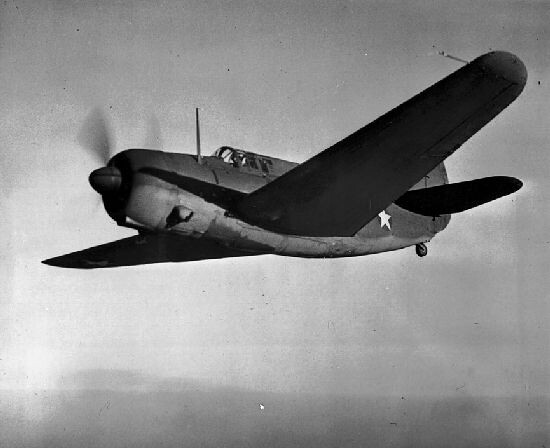
K.I. Sawyer is important in military history not only for the great lakes region of United States of America but also for the Upper Peninsula of Michigan. K.I. Sawyer has held many important groups of aircraft that have helped win the Cold War and World War II. The 484th Fighter Interceptor Squadron was one of the final fleets to be held in this air base and was responsible for assisting the 473rd during their missions over seas.
On January 24 of 1955 construction started with a team of 850 workers to build the runway and control tower. K.I. Sawyer Air Force Base was the base to be at according to K.I. Sawyer Heritage Air Museum. Even with its chilling nickname “K.I. Siberia” this air base still had cadets flocking to be a part of it. “K.I. Sawyer AFB was a favorite base among the SAC community… it was an attractive base because of its pleasing north woods location and it proximity to the outdoor activities off the base, including hunting, fishing, boating, and winter sports.” Being in the center of Michigan’s Upper Peninsula, the air base and its personal had to ender the at sometimes unless amounts of snow but didn’t have to deal with the blistering cold temperatures as those from the air bases in other northern states. A lot of aircraft and fighter wings called this base home in its life time. But just like in life all good things must come to an end. The last B52 left K.I. Sawyer in November 1994. A Base Deactivation Ceremony commenced in August 1995 to put the old base out to pasture. The gem in the snow is now utilized as Sawyer International Airport.
Although the runways are still being used by commercial travelers and airlines, K.I. Sawyer has now developed into a museum that recaptures the times of when the air force base was in its hay day. The museum is home to a number of display planes, like those that were housed at the base and memorials to remember the wings and squadrons that were deployed. The most well known attraction is the Boeing B52D “Stratofortress”. This behemoth had the responsibility of multiple missions bombing North Vietnam. It was originally based in Texas but now call Michigan home.
A news article was written in September 2014, by the Mining Journal’s Christie Bleck. In the article the writer questioned Bob Vick, the president and Chief Executive Officer of the K.I. Sawyer Air Force Base Museum. Vick was stationed at K.I. Sawyer from 1977 to 1982, where his main duties were to maintain and take care of the control tower and radar devices. He also served during the Vietnam Campaign. A strong minded Vick reminisced about the memories and the stories told from his days working in the base. Vick was asked if he agreed with the closing of Sawyer Air Force Base, his response was… “Well, in a way, no, but I understand why, because the base was here because of what we called the Cold War, and they had to scatter their bombers and tankers out to keep Russia from destroying everything with one missile.” Contrary to popular belief, the Upper Peninsula was actually targeted by the soviet during the Cold War. During a raid on an abandoned soviet hanger, our soldiers found missiles with the names Hancock, Michigan and Iron Mountain, Michigan written on the side. Now this may sound like the classical horror story passed around the grape vine, but it wouldn’t be that farfetched. Everyone knows the Upper Peninsula is known as the Copper Country. Copper and iron are used in the military from the raw materials used to craft the war machines to the bullets and ammunition the machines spit out at the enemies, the theory is very possible.
The Cold War was a time of pure panic and game of chess between the communist of the Soviet Union and the United States of America. To combat the possibility that the soviets could attack the US from the north, across the arctic, the military countered with the deployment of the 473rd Fighter Group out of K.I. Sawyer Air Force Base. The main task for these brave young air men was to protect the skies over the northern part of the nation. America already had plans to counter the possible attacks from Cuba, but with Soviet Russia just quick trip around the North Pole to attack free soil; preemptive actions had to be taken. Luckily no known attacks came from above.
The 473rd also contributed to the victory over the axis powers of Germany, Italy and Japan during the Second World War. Comprised of three sub groups, the 482nd, 483rd, and 484th Fighter Squadrons. This group was known as a replacement training group, which is lame man’s terms is the practice squad. These groups would train the pilots before they would actually see air to air combat.
The 484th Fighter Interceptor Squadron was positioned in the Upper Peninsula of Michigan at the United States’ military air force base at K.I. Sawyer. The squadron was active from October 12, 1943 to February 16, 1959. The 484th is known for its assists of the 473rd Fighter Group during World War II and Cold War.
The 484th Fighter Interceptor Squadron called three air force bases home, in its lifespan. Their first home was the Grand Central Air Terminal in California where it was founded as the 484th Fighter Squadron. After a short lived career of five months, this squadron took an eleven year hiatus at the Ephrata Army Air Base located in the state of Washington. Then on June 8, 1956 resumed operations at K.I. Sawyer Air Base where it remained stationed till its deactivation on February 16, 1959.
|
|
|
There were three models of aircraft that made up the 484th Fighter Interceptor Squadron, the Cessna AT-17 Bobcat, A-25 Helldiver and the P-39 Airacobra. The Cessna Bobcat was first produced in 1939 by the Cessna Airplane Company. Although is used for multiple different maneuvers and operations, the US military primarily designated them to be used as a training plane to help transition the pilots from single engine to twin engine aircraft. The first models were made wood and tubular steel for weight purposes, a very simple design that made its maiden voyage in March 1939. The Army purchased thirty three AT-8 aircraft for usage; later the AT-17 replaced this design. By the end of World War II more than 4600 “bobcats” were in the air. The simple designs lead to a short ceiling in terms of performance and a short shelf life. As of 1949 the air craft was consider obsolete.
The A-25 Helldiver was a German inspired bomber made by Curtiss in 1938and was used by the Navy. A major key factor of this plane’s success was the engineering behind the air cooled radial engine. Other minor upgrades that changed the thinking of what are possible for aircrafts came from this plane also, like foldable wings, retractable landing gear, de-icing equipment for the cool temperatures of higher elevations and also armor surrounding the cockpit for the crew’s protection. At first it appeared that this plane would have never see any fly time. The first prototype crashed and burned and its maiden flight in December of 1940. After adjustments to the fuselage and tail, it regained its “wings” in October the following year. The success was shorted lived. During the diving test in December of 1941 the tail failed again handicapping the massive order already placed by the military. Two more years of improvements allowed for the “Helldiver” to rule the air and sea in the pacific theater in the Second World War.
Lastly there was the P-39 Airacobra, designed in 1937 by Lieutenant Benjamin S. Kelsey and Captain Gordon Saville, this new interceptor was meant to dominate the airways with firepower. But early tests were disappointing, with the increased weight of the supped up arsenal, the engines would overheat trying to create enough power to perform the necessary maneuvers. The National Advisory Committee for Aeronautics performed tests and suggested a turbo-charger be included which would increase the speed of the plane by 16%. Due to the lack of space for a turbo-charger, Ben and Gordon redesigned a smaller engine with a supercharger instead. Although, the P-39 was utilized more in the pacific theater than Europe. With the inclusion of the turbo charger the Airacobra had a very low altitude limit of 12000 feet. A major break through for this aircraft though was it was built around a 37mm T9 cannon, making it the first fighter aircraft to be known to have a weapons system. These cannons were capable of sending projectiles over 500 yards and have them penetrate about an inch into the enemies armor. Having this feature was great on paper but issues occurred with the cannon blocking the pilot’s view and also throw off the balance of the entire air craft. To counter this, the cannon was placed in front of the center fuselage and the cockpit was raised above the cannon. The “Airacobra” first saw action in New Guinea where it took on the Japanese Zeros.
Primary/Secondary Sources
- Bleck,Christie. “Sawyer AFB Memories.” – MiningJournal.net. N.p., n.d. Web. 19 Nov. 2015.
- “473rd Fighter Group.” – WWII. N.p., n.d.Web. 19 Nov. 2015.
- “Quick Links.” Official Website. N.p., n.d. Web. 19 Nov. 2015. .
- “Flawed Fighter: Bell P-39 Airacobra.” About.com Education. N.p., n.d. Web. 10 Nov.2015.
- “Warbird Alley:Cessna UC-78 Bobcat/At-17/T-50.” Warbird Alley: Cessna UC-78 Bobcat/AT-17/T-50. N.p., n.d. Web. 10 Dec.2015.
- “Curtiss A-25/SB2C.” Curtiss A-25/SB2C. N.p., n.d. Web. 10 Dec. 2015.
- “473rd Fighter Group.” – WWII. N.p., n.d. Web. 10 Dec. 2015.


